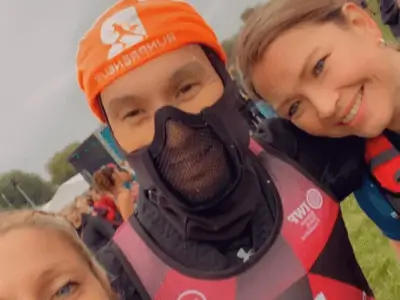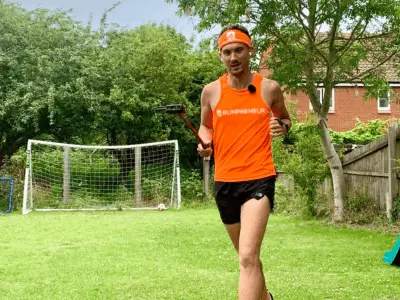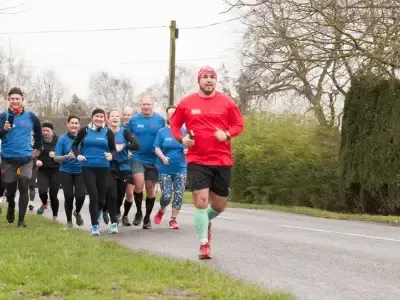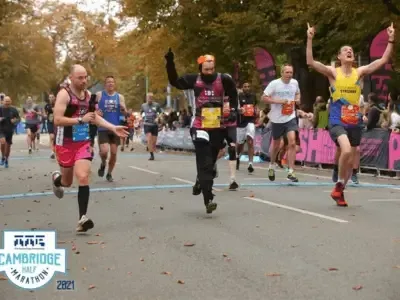Runpreneur Journey Blog
Embark on an extraordinary journey with the Runpreneur community. Discover inspiring stories, insider tips, and the transformative power of our global challenge. From first-time runners to seasoned athletes, our blog captures the essence of the Runpreneur movement, inspiring others to join the cause.

Running the Day Before an Endurance Event
Running the Day Before an Endurance Event
After 1,819 consecutive days of running, I’ve learnt a lot about prepping for endurance events. If you’re a streak runner, or just someone who likes a little leg loosener before a big race, this one’s for you.
The Traditional Advice: Tapering
Normally, the recommended approach before an endurance event is to do as little as possible in the week or even two weeks leading up to race day. This tapering period gives your legs and body maximum rest and recuperation before the stress of a hard race. Most experts would advise against any serious running 24 hours before lining up for a marathon, ultra, or long-distance race.
Why I Still Run the Day Before
That traditional advice makes sense—unless, like me, you’re committed to a running streak. I’m just days away from five years of running daily, which means I can’t skip a day, not even on the eve of a major event! So I’ve refined a routine that works for me without jeopardising my performance.
My Approach: The Leg Loosener
Here’s my strategy for my pre-race run:
Minimal Distance: I stick to the shortest run distance of my streak, which is 5km. Never underestimate a 5k—globally, it’s a respected benchmark and not to be done half-heartedly.
Ultra-Easy Pace: My normal pace is around 5–5:15 per kilometre, but this pre-race run is at least a minute slower—more like 6:25/km. I’m not bothered by the slower pace; in fact, it’s essential.
Efficiency and Recovery: The aim isn’t to push but to float. I focus on running as effortlessly as possible, minimising muscular stress. It’s just about moving, getting oxygenated blood to the muscles, and shedding any lingering stiffness.
Timing: I always run first thing in the morning the day before my event. That way, I maximise the time between my leg loosener and race start—usually upwards of 26 hours to recover.
Lessons learnt
Honestly, the official advice is not to run the day before a big race—especially after a properly executed taper. But if you’re on a running streak or need that mental release, stick to minimal distance at a truly gentle pace. Float through it, focusing on recovery and efficiency rather than speed or effort.
And if you do decide to run, do it as early as possible to maximise recovery time before the start line. That way, you’re as fresh and relaxed as can be when the gun goes off.
If you found this helpful, please consider subscribing, sharing, or commenting—every bit of support helps me continue my mission of saving children’s lives through the ultimate ultramarathon of daily run vlogging! Stay positive, stay happy, and see you next time.

Kevin's 40,075km Challenge: Raising £1 Million for Children
Meet Kevin, a dedicated Runpreneur who embarked on an extraordinary journey to raise £1 million for children in need. Over the course of his 40,075km challenge, Kevin's unwavering determination and passion inspired thousands to join the Runpreneur movement.

Runpreneur Vlogging: Capturing Kevin's Journey
Experience the Runpreneur challenge through the lens of Kevin's video diary. Witness his ups and downs, the camaraderie of the community, and the transformative power of running for a cause. Dive into the visual stories that capture the essence of the Runpreneur movement.

Empowering Children, One Step at a Time
As Kevin logged every kilometre of his 40,075km challenge, the true purpose behind his journey came into focus. Each step, each bead of sweat, fuelled essential healthcare, education, and nutrition programs for children in need around the world.

The Transformative 4x4x48 Challenge
Experience the thrill and personal growth of our iconic 48-hour running event. Witness the determination and resilience of Runpreneurs as they push their limits, one mile at a time.

Runpreneur Vlogging: Capturing the Journey
Dive into the visual stories of our Runpreneurs as they document their experiences through engaging video logs. Witness the challenges, triumphs, and moments of camaraderie that define the Runpreneur spirit.





















